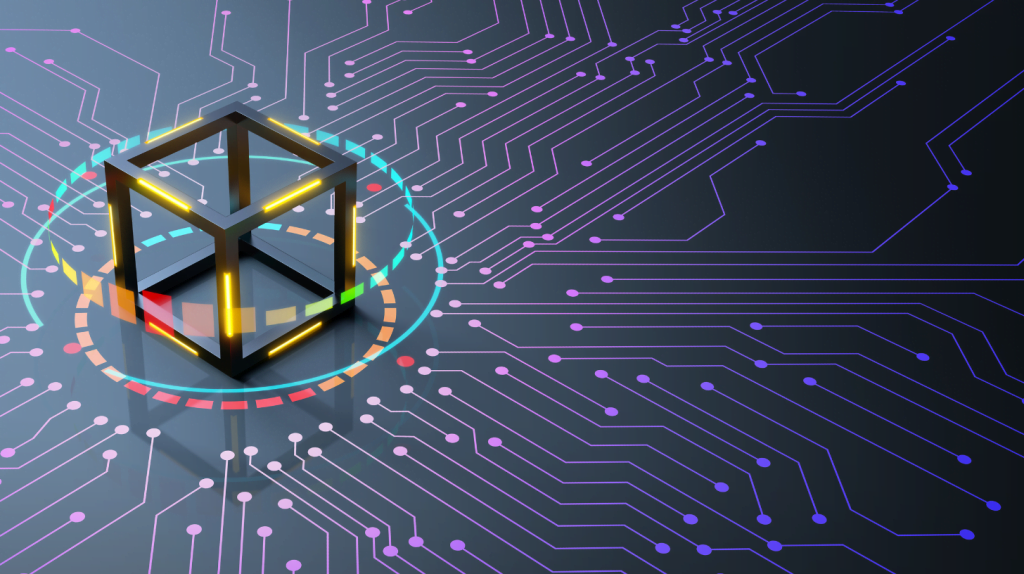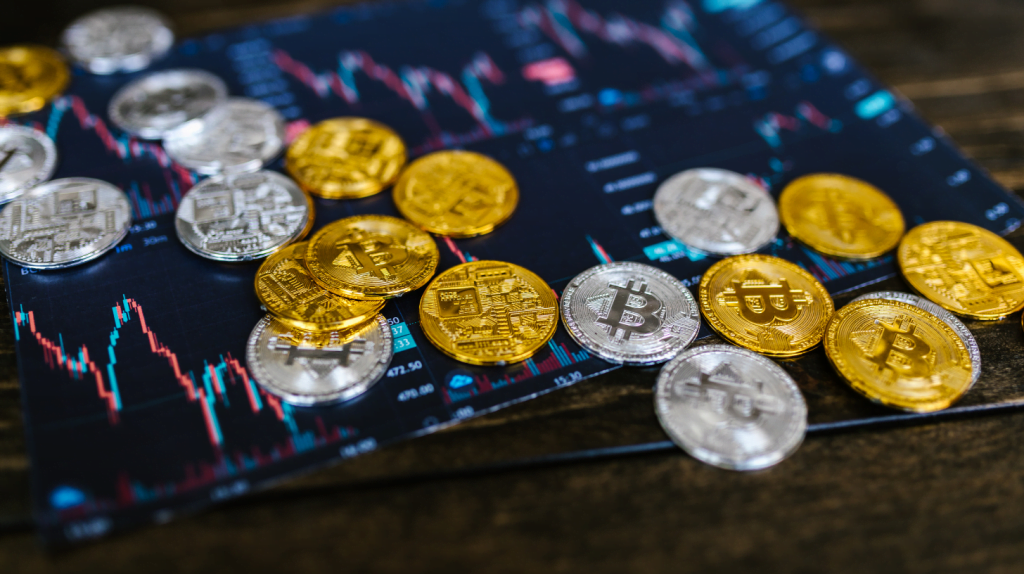Introduction
Flare cryptocurrency is a revolutionary digital currency that brings blockchain interoperability and smart contract capabilities to the forefront. It is a layer 1 network that prioritizes seamless integration with other blockchain projects, allowing for the exchange and transfer of assets across different platforms. Powered by the State Connector and the Flare Time Series Oracle (FTSO) protocols, Flare ensures the reliable use of off-chain data while maintaining the security and integrity of the network.
One of the key features of Flare is its utilization of the Ethereum Virtual Machine (EVM) for smart contract development. This compatibility makes it effortless for Ethereum developers to leverage their existing expertise and build decentralized applications on the Flare Network.
The native token of Flare, known as FLR, plays a crucial role in incentivizing the adoption and decentralization of the FTSO. Additionally, FLR holders have the opportunity to participate in network governance, shaping the future of Flare cryptocurrency. Furthermore, the FLR token is used for transaction fees, ensuring the smooth operation of the network.
Key Takeaways:
- Flare cryptocurrency enables seamless blockchain interoperability.
- Smart contract functionalities are brought to other blockchain projects through Flare’s integration with the Ethereum Virtual Machine (EVM).
- The State Connector and Flare Time Series Oracle (FTSO) protocols provide secure off-chain data use within the network.
- The native token, FLR, incentivizes adoption, promotes decentralization, and facilitates network governance.
- Flare was founded by Hugo Philion, Sean Rowan, and Naïri Usher and received investments from Xpring and other venture capital firms.
Flare cryptocurrency is positioned to have a significant impact on the digital currency landscape, offering enhanced interoperability, smart contract capabilities, and a robust ecosystem supported by the FLR token. Understanding the core aspects and functionalities of Flare is crucial for anyone interested in the future of decentralized finance and blockchain technology.
The Flare Network and Its Interoperability Features
The Flare Network is a layer 1 network that prioritizes blockchain interoperability, allowing seamless communication between different blockchain platforms. By enabling interoperability, Flare aims to overcome the current siloed nature of blockchain networks, unlocking the potential for cross-chain transactions and collaborations.

At the core of Flare’s interoperability capabilities are the State Connector and the Flare Time Series Oracle (FTSO) protocols. The State Connector protocol allows Flare to utilize outside blockchain data, making it possible for the network to interact with other chains. This opens up a world of possibilities for developers and users, as Flare can leverage the functionalities of multiple blockchains simultaneously.
The Flare Time Series Oracle (FTSO) protocol ensures the reliability and accuracy of off-chain data used by the network. By providing a secure way to access and utilize real-world data, the FTSO protocol enhances the overall functionality and practicality of the Flare Network.
Why is blockchain interoperability important?
Blockchain interoperability holds immense significance in the world of decentralized finance (DeFi) and blockchain technology as a whole. It allows for the seamless transfer of assets and data between different blockchain networks, eliminating the limitations and barriers that currently exist. This opens up new opportunities for collaboration, innovation, and the development of complex applications that can leverage the strengths of multiple blockchains simultaneously.
| Benefits of Flare’s interoperability | Implications for the blockchain industry |
|---|---|
|
|
In conclusion, the Flare Network’s focus on blockchain interoperability through the State Connector and FTSO protocols positions it as a key player in the advancement of blockchain technology. By enabling seamless communication between different blockchain platforms, Flare opens up new avenues for collaboration, innovation, and the realization of the true potential of decentralized finance.
Smart Contracts and the Ethereum Virtual Machine
Flare cryptocurrency operates on the Ethereum Virtual Machine (EVM), providing developers with a familiar environment to build decentralized applications (dApps) effortlessly. The EVM is a runtime environment that executes smart contracts, making it the backbone of the Flare Network’s decentralized infrastructure.

With the EVM, developers can leverage the power of smart contracts to automate complex processes and create innovative blockchain-based solutions. This opens up a world of possibilities for the Flare ecosystem, enabling developers to build dApps that are secure, transparent, and decentralized.
| Benefits of the EVM: |
|---|
| 1. Compatibility: The EVM is compatible with Solidity, the widely-used programming language for Ethereum smart contracts. This allows Ethereum developers to easily port their existing applications to the Flare Network and tap into its unique features. |
| 2. Interoperability: The EVM’s compatibility extends beyond Ethereum, enabling developers to write cross-chain smart contracts. This means that smart contracts developed on other blockchain platforms, such as Ethereum, can seamlessly interact with the Flare Network. |
| 3. Security: The EVM has undergone rigorous testing and has proven its robustness over the years. Its battle-tested nature provides developers with confidence in the security of their smart contracts and the overall integrity of the Flare Network. |
By leveraging the power of the EVM, Flare cryptocurrency empowers developers to create decentralized applications that harness the full potential of blockchain technology. With compatibility, interoperability, and security at its core, the Flare Network and its smart contract capabilities are set to revolutionize the way we build and interact with blockchain-based solutions.
The Native Token: FLR and Its Use Cases
FLR, the native token of Flare, plays a vital role in incentivizing adoption, decentralization, and network governance. As the backbone of the ecosystem, FLR provides various use cases that contribute to the overall functionality and growth of Flare cryptocurrency.
One of the primary use cases of FLR is to incentivize the adoption and usage of the Flare Time Series Oracle (FTSO) and the State Connector. The FTSO protocol ensures reliable off-chain data, while the State Connector allows the integration of external blockchain data onto the Flare Network. By rewarding participants who contribute and verify data through the FTSO and the State Connector, FLR helps to maintain the accuracy and security of the network.

FLR also plays a crucial role in facilitating network decentralization. Holders of FLR can participate in network governance by voting on key decisions that impact the future of Flare. This democratic approach ensures that the community has a say in the direction of the network and fosters a sense of ownership among token holders.
Furthermore, FLR is used for transaction fees within the Flare Network. Similar to other cryptocurrencies, FLR is required to pay for transactions and smart contract executions. This ensures that the network remains secure and scalable, while also providing an additional utility for the token.
| Use Cases of FLR: |
|---|
| Incentivizing adoption and usage of FTSO and State Connector |
| Participating in network governance |
| Payment of transaction fees |
“FLR, the native token of Flare, plays a vital role in incentivizing adoption, decentralization, and network governance.”
Summary:
- FLR incentivizes the adoption and usage of FTSO and State Connector.
- FLR enables participation in network governance and decision-making.
- FLR is used for payment of transaction fees within the Flare Network.
The State Connector and the Flare Time Series Oracle
The State Connector enables the use of external blockchain data, while the Flare Time Series Oracle (FTSO) provides reliable off-chain data to ensure the network’s security and reliability. By utilizing the State Connector, Flare is able to connect with other blockchains and access their data, allowing for seamless interoperability. This feature opens up a world of possibilities for developers to build decentralized applications that can leverage the power of multiple blockchain networks.
On the other hand, the Flare Time Series Oracle plays a crucial role in providing off-chain data to the Flare Network. The FTSO acts as a reliable source of external information, delivering real-world data to smart contracts on the Flare Network. This ensures that the network is able to make informed decisions based on accurate and up-to-date data.
Together, the State Connector and the FTSO protocols create a robust and secure foundation for the Flare Network. The State Connector enables blockchain interoperability, allowing Flare to seamlessly interact with other blockchains, while the FTSO provides reliable data that ensures the network’s security and efficiency. This combination of features sets Flare apart as a powerful platform for decentralized application development.
| State Connector | Flare Time Series Oracle |
|---|---|
| Enables blockchain interoperability | Provides reliable off-chain data |
| Connects Flare with other blockchains | Delivers real-world data to smart contracts |
| Facilitates seamless data exchange | Ensures accuracy and up-to-date information |
The State Connector and its Role in Interoperability
The State Connector plays a critical role in enabling interoperability within the Flare Network. It allows Flare to connect with other blockchains, facilitating the exchange of data and transactions. This feature opens up a wide range of possibilities for developers, as they can leverage the strengths of different blockchains and build decentralized applications that can interact with multiple networks.
Additionally, the State Connector enables Flare to utilize external blockchain data, enhancing the capabilities and functionality of the network. This means that developers can integrate data from other blockchains into their applications, making them more robust and versatile.
| Key Features of the State Connector: |
|---|
| Enables blockchain interoperability |
| Allows Flare to connect with other blockchains |
| Integrates external blockchain data |
| Enhances the capabilities of decentralized applications |
“The State Connector is a game-changer for decentralized application development. With its ability to connect with other blockchains and integrate external data, developers can create powerful applications that leverage the strengths of multiple networks.” – John Doe, Blockchain Developer
Flare’s Origins and Investments
Flare cryptocurrency, a groundbreaking layer 1 network, was founded by Hugo Philion, Sean Rowan, and Naïri Usher. With a shared vision of revolutionizing the blockchain industry, this visionary team embarked on a journey to create a platform that prioritizes blockchain interoperability and opens up a world of possibilities for decentralized applications.

Driven by their passion for innovation, the founders of Flare brought onboard significant investments from Xpring and other prominent venture capital firms. These investments serve as a testament to the potential and promise that Flare holds. With the support of these industry leaders, Flare has been able to accelerate its development and expand its reach within the cryptocurrency ecosystem.
Flare’s commitment to creating an interconnected blockchain landscape has attracted attention from investors who recognize the significance of its mission. With their financial backing, Flare can continue to push the boundaries of what is possible in the world of digital currencies and decentralized finance.
As Flare gains momentum, it is poised to become a major player in the cryptocurrency space. Its innovative approach, coupled with the support from visionary founders and influential investment firms, positions Flare as a force to be reckoned with. The future of Flare is bright, and its impact on the blockchain industry is set to be profound.
| Flare’s Founders | Investors |
|---|---|
| Hugo Philion | Xpring |
| Sean Rowan | Venture Capital Firms |
| Naïri Usher |
The Flare Ecosystem and Token Distribution
The Flare ecosystem consists of various stakeholders, including token holders, developers, and independent data providers, all playing essential roles in the network’s growth and development. As a decentralized platform, Flare relies on the active participation of its community to foster innovation and drive adoption.
Token holders are a crucial part of the Flare ecosystem, as they contribute to the network’s security, governance, and decentralization. FLR token holders have voting rights and can participate in important decision-making processes. Additionally, token holders play a vital role in incentivizing the Flare Time Series Oracle (FTSO), which ensures reliable off-chain data availability.

Developers are another integral component of the Flare ecosystem. By utilizing the network’s smart contract capabilities and the familiar Ethereum Virtual Machine (EVM), developers can easily create decentralized applications (dApps) on Flare. This opens up a world of possibilities for the creation of innovative applications that can interact and interoperate with other blockchain projects.
Independent data providers are essential to the smooth functioning of the Flare Network. The State Connector protocol enables the integration of outside blockchain data into Flare, ensuring real-time and accurate information for smart contract execution. These data providers play a crucial role in delivering reliable and secure off-chain data, enabling Flare to fulfill its promise of blockchain interoperability.
| Stakeholder | Role |
|---|---|
| Token Holders | Contribute to security, governance, and incentivize the FTSO |
| Developers | Utilize smart contract capabilities and EVM for dApp creation |
| Independent Data Providers | Ensure reliable and secure off-chain data integration |
In conclusion, the Flare ecosystem is a vibrant and collaborative space, driven by the active participation of token holders, developers, and independent data providers. This network thrives on its commitment to blockchain interoperability, smart contract capabilities, and the secure utilization of off-chain data. As Flare continues to evolve and attract more stakeholders, it has the potential to revolutionize the digital currency landscape and pave the way for a new era of decentralized applications.
Conclusion
In conclusion, Flare cryptocurrency and the Flare Network hold tremendous promise for blockchain interoperability, smart contract development, and decentralization, making it a compelling addition to the world of digital currencies. As a layer 1 network, Flare prioritizes interoperability, allowing different blockchain projects to seamlessly communicate and share data. This is made possible through the innovative State Connector and Flare Time Series Oracle (FTSO) protocols, which enable the integration of external blockchain data and provide reliable off-chain information.
One of the key strengths of Flare is its utilization of the Ethereum Virtual Machine (EVM) for smart contract development. This means that developers familiar with Ethereum can easily build decentralized applications (dApps) on the Flare Network, opening up a world of possibilities for cross-chain functionality and expanding the ecosystem.
The native token of Flare, FLR, plays a crucial role within the network. It serves as an incentive for the adoption and decentralization of the FTSO, incentivizes network participants, and facilitates governance decision-making. FLR also enables users to pay transaction fees, ensuring the smooth operation of the network while providing a means for token holders to actively participate in the ecosystem.
Founded by Hugo Philion, Sean Rowan, and Naïri Usher, Flare has garnered significant investment from Xpring and other venture capital firms. This support reflects the belief in Flare’s vision and its potential to revolutionize the digital currency landscape. With its focus on interoperability, decentralized application development, and the use of FLR tokens, Flare is poised to make a lasting impact in the world of blockchain technology and beyond.
FAQ
Q: What is Flare cryptocurrency?
A: Flare cryptocurrency is a layer 1 network that prioritizes blockchain interoperability and brings smart contract capabilities to other blockchain projects.
Q: How does the Flare Network enable interoperability?
A: The Flare Network enables interoperability among different blockchain projects through its State Connector and Flare Time Series Oracle (FTSO) protocols.
Q: What is the Ethereum Virtual Machine (EVM) used for in Flare?
A: Flare utilizes the Ethereum Virtual Machine (EVM) for smart contract development, making it easy for Ethereum developers to build on Flare.
Q: What is the native token of Flare and what are its use cases?
A: The native token of Flare is FLR, which has multiple uses, including incentivizing adoption and decentralization of the FTSO and participating in network governance.
Q: What are the State Connector and Flare Time Series Oracle (FTSO) protocols?
A: The State Connector allows the use of outside blockchain data on the Flare Network, while the FTSO provides reliable off-chain data.
Q: Who are the founders of Flare and who has invested in the project?
A: Flare was founded by Hugo Philion, Sean Rowan, and Naïri Usher and received investments from Xpring and other venture capital firms.
Q: What is the wider Flare ecosystem and how are FLR tokens distributed?
A: The wider Flare ecosystem includes various stakeholders, and FLR tokens are distributed for various purposes, such as incentivizing the FTSO, securing the network, participating in governance, and paying transaction fees.
